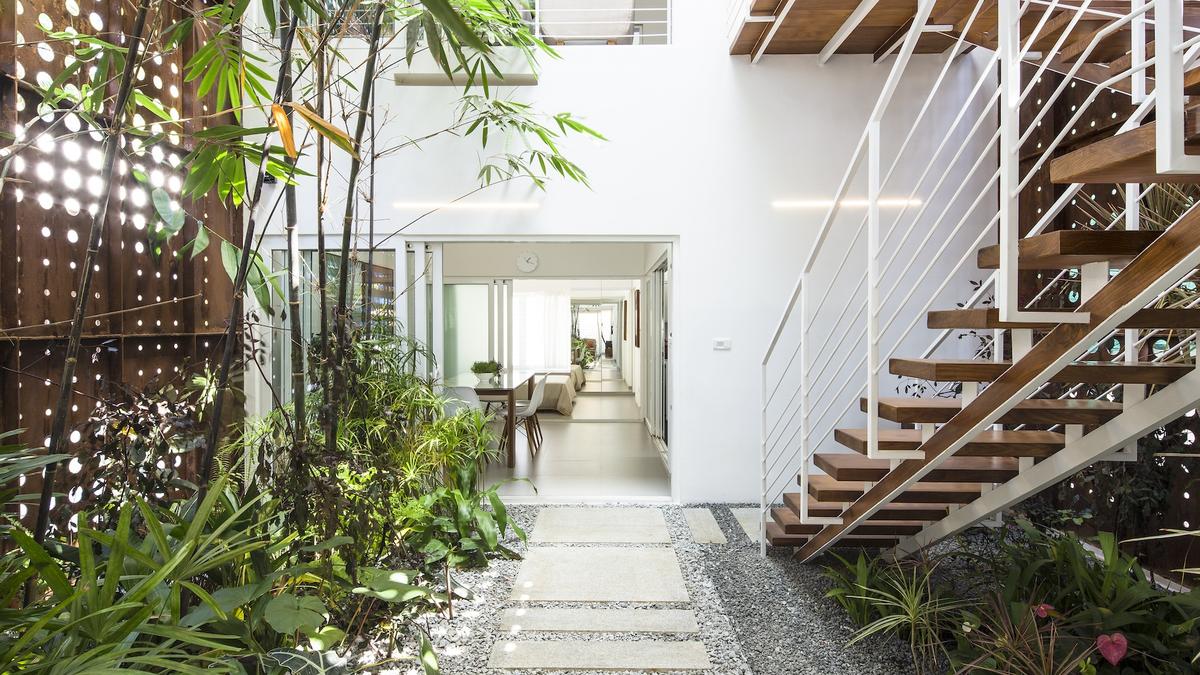
Building skinny homes
The Hindu
Skinny homes: From Tokyo to Toronto to New Delhi and Thrissur, the challenges of a narrow plot have paved the way for architectural innovations, both in India and globally
From Tokyo to New York, Amsterdam to Toronto, the design of a Skinny House is a statement of triumph. Often there’s a colourful history, like the narrow Spite House from 1800s Boston, a result of a spat between two brothers over unequal land division. For both architects and residents, it’s a curiously satisfying experience to extract the most out of a limited space through vertical exploration. In congested Indian cities, with cumbersome plot offerings, could this be a solution? The emphatic answer is “No” from architects we spoke to, who concur that narrow home designs emerge from plot restrictions, rather than proving good solutions for crowded cities.
Yet, narrow house designs have paved the way for amazing innovations, both in India and globally, as architects get tremendously creative with such constricted plots to overcome the prime challenges of user circulation, cross ventilation, light and privacy.
The Indian narrow home is created around a central well that resonates with the haveli or aangan in North India and the nadumuttam in Kerala. However, these traditional devices are not a conscious effort by the architect to integrate vernacular features into a modern imprint: rather, they are responses to plot constraints, in relation to the local climate and Indian ethos.
Completed in 2015, The Breathing Wall Residence by LIJO.RENY.architects in Thrissur was conceived as a 6x16m footprint in a 4.10 cent plot, wedged between a private road, a public road and houses on the other two sides. The 2,200 sq.ft. house, developed as a prototype for narrow plots is a multiple award winner.
Architects Lijo Jos and Reny Lijo created a landscaped skylight atrium, which works like a courtyard space between the east and west wings, bringing in ample light. Every room has air vents and the central skylight heats up the air, forcing it to rise to the top, constantly circulating a breeze. Green vegetation unfolds in layers and the space evolves naturally around the central well. “We are taught how to do these tricks,” laughs Lijo when I ask him about his clever use of biophilic design — the increased connectivity to nature by design.
While The Breathing Wall Residence was a mid-segment project, LIJO.RENY took creative licence to play around the budget to evolve an unconventional design. Lijo and Reny say, “Right from the project brief, we were aware this challenging context requires extraordinary interventions.” Innovative measures such as perforated Corten Steel screens, turned out to be a lifesaver — lightweight yet robust for tropical weather, offering security, privacy and aesthetics. The screens cut off the chaos of the street and create dynamic dappled light attracting even bulbuls through the perforations, to build their nests in the courtyard’s bamboo.
Meanwhile, in Canada, a much-touted apartment in downtown Toronto is merely 6’6” wide at the bottom, the widest being 7’3” at the top. This narrow house with a full glass front is built on the site where an 1880s single-storey house once stood. The newly built home owned by a couple is 1,400 sq.ft. with multiple levels (five, including sub-levels). On a YouTube video, the kitchen appears large with the innovative use of high ceilings and thoughtful appliances. There’s even a backyard and an attic. Wood in plenty and exposed pipes give the space a nautical feel of a boat or a tree house with a winding stairwell through its puzzling spaces.













